
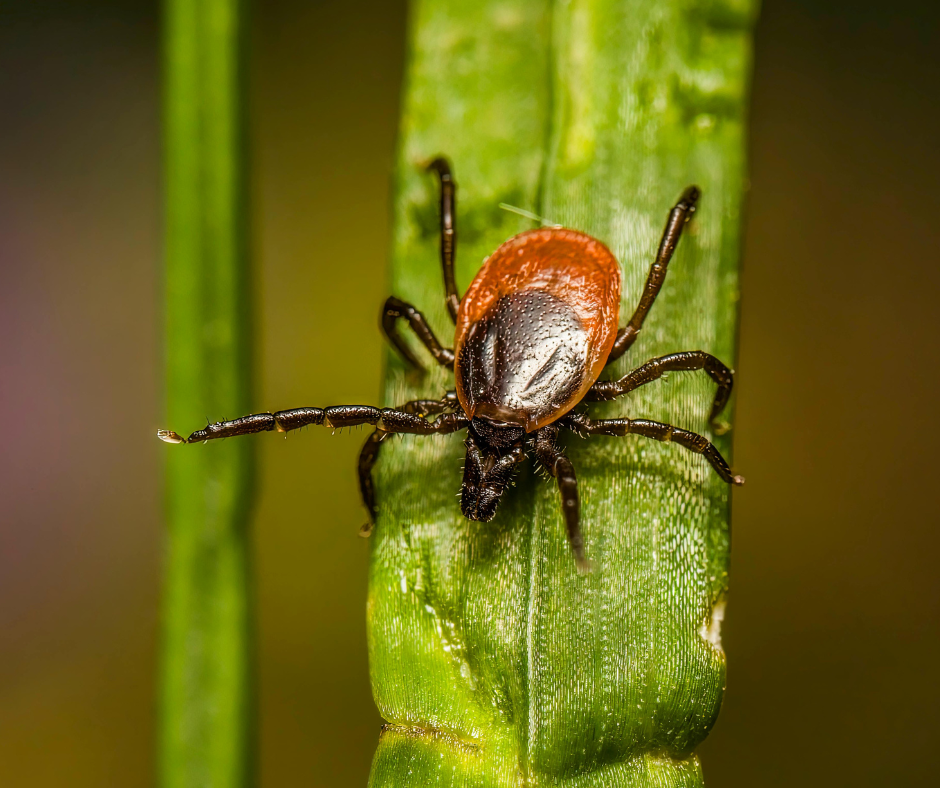
Ticks are more than just an outdoor nuisance. They’re tiny, stealthy parasites capable of transmitting serious diseases like Lyme disease, anaplasmosis, and babesiosis. Understanding the tick life cycle is crucial for protecting your family and pets because each stage poses different risks.
In this guide, we’ll explain the four stages of the tick life cycle, how ticks spread disease, when they’re most active, and how to break the cycle naturally.
The tick life cycle consists of four distinct stages: egg, larva, nymph, and adult. This process, known as metamorphosis, typically takes two to three years to complete.
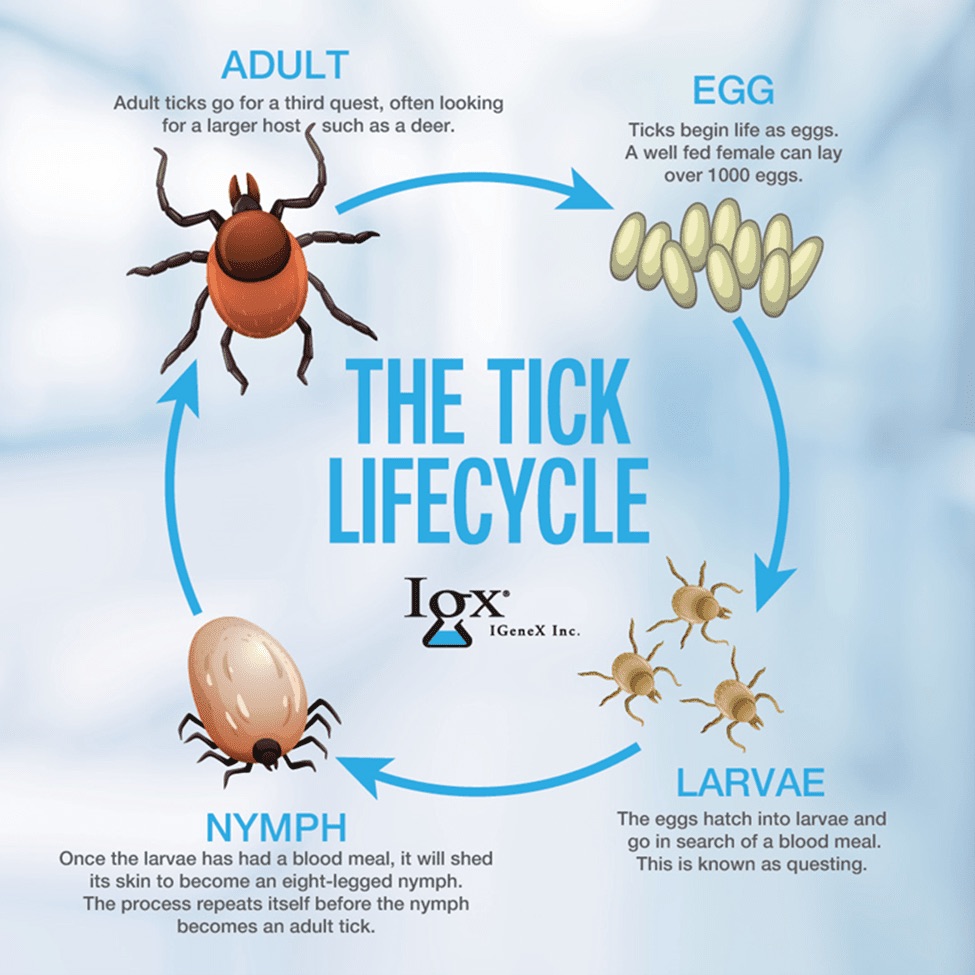
Each stage has unique behaviors, host preferences, and disease risks. The blacklegged tick, often called the deer tick, completes its life cycle in about two years and is the primary vector of Lyme disease in the eastern U.S. The western blacklegged tick (Ixodes pacificus) follows a similar pattern but may take up to three years.
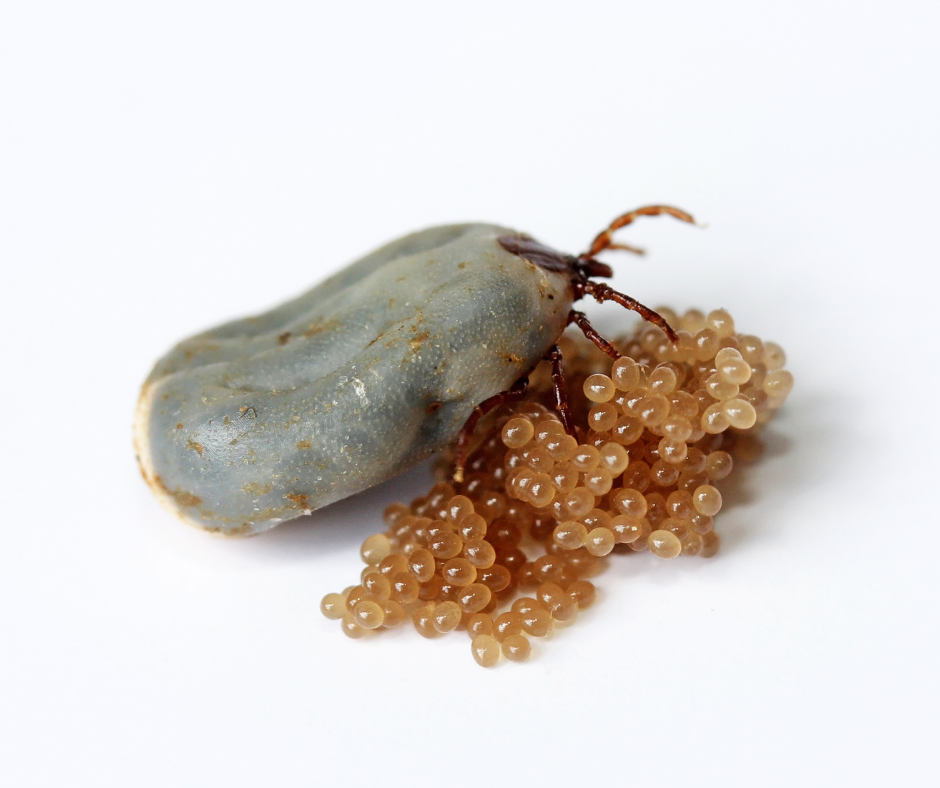
The tick life cycle begins when a fertilized female lays thousands of eggs in sheltered, moist areas like leaf litter, tall grasses, or soil. Check out this blog to learn more about tick nests.
After laying eggs, the female dies, completing her own life cycle.
Key Facts About Tick Eggs:
Why it matters:
Understanding where ticks lay eggs helps you identify and reduce potential tick breeding hotspots. Removing leaf litter, keeping grass short, and creating barriers between wooded areas and play spaces can stop the tick life cycle before it begins.
When eggs hatch, the tick larvae (or “seed ticks”) emerge. These tiny, six-legged larvae are less than 1 mm long and often go unnoticed. At this stage, larvae are usually not infected with pathogens but can become infected after their first blood meal.
Larvae represent the first chance for ticks to acquire disease-causing bacteria. By controlling small wildlife populations and using pet-safe tick prevention, you can prevent larvae from progressing to the next, riskier stages of the tick life cycle.
Larval Behavior:
Nymph ticks are the size of a poppy seed and can easily attach to humans or pets unnoticed. This is the most dangerous stage of the tick life cycle, responsible for most Lyme disease cases in people.
Nymph Behavior:
Why nymphs are high-risk:
Because they are so small, nymphs often feed undetected for 24–48 hours, enough time to transmit Lyme disease bacteria.
Protection Tips During Nymph Season:
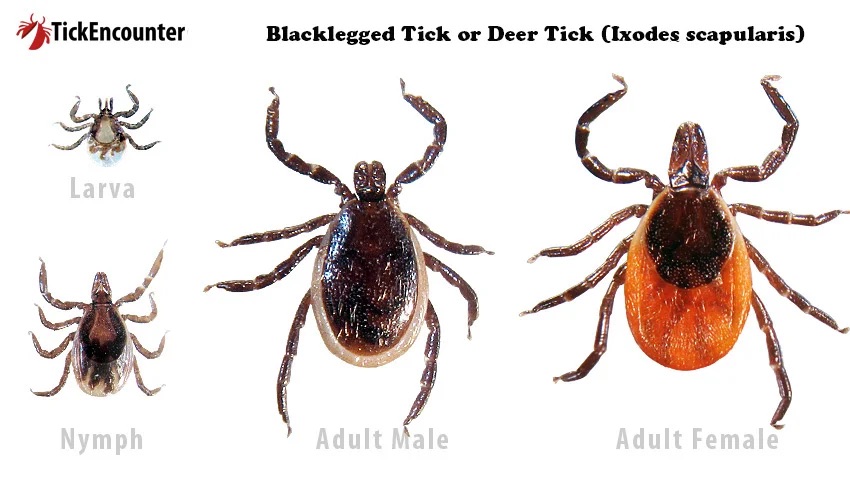
Adult ticks are larger (3–5 mm) and easier to see. Adults feed on large mammals, especially deer, dogs, and humans, to complete the tick life cycle. Adult ticks can carry Lyme disease, babesiosis, and anaplasmosis. Because they often feed for several days, early detection and removal are critical.
Adult Tick Behavior:
Ticks acquire pathogens early in their development, often during their larval or nymph stages, and retain them through molting.
Common tick-borne diseases in the U.S. include:
High-risk stages:
Ticks rely on wildlife hosts to survive.
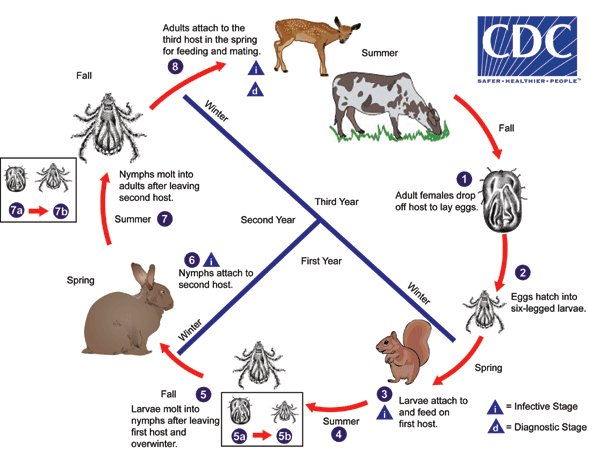
Host Relationships by Life Stage:
Ecological note:
Deer play a crucial role in the tick life cycle, serving as a host for adult ticks. However, deer don’t carry Lyme bacteria, white-footed mice and small mammals are the main reservoirs. That’s why managing rodent populations and landscaping are more effective than deer reduction alone.
Ticks remain active for much of the year, but different stages peak in different seasons:
| Season | Active Tick Stage | Risk Level |
|---|---|---|
| Spring | Nymphs | High |
| Summer | Adults & Nymphs | High |
| Fall | Larvae | Moderate |
| Winter | Dormant, occasional activity in mild temps | Low |
Understanding this seasonal cycle helps families tailor tick prevention strategies year-round.
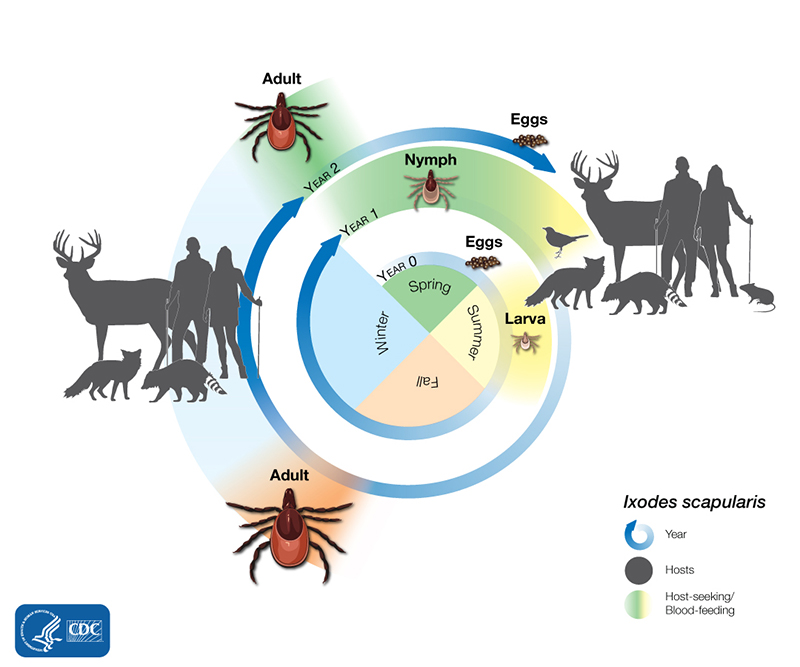
Protect your family and pets by targeting multiple stages of the tick life cycle:
Integrated Tick Management (ITM) combines landscaping, wildlife control, and natural repellents to reduce ticks sustainably.
Promising methods include:
These strategies disrupt the tick life cycle at multiple stages, preventing eggs from hatching, larvae from feeding, and adults from reproducing.
The tick life cycle, from egg to adult, spans years and involves multiple hosts. Each stage presents unique challenges for families and pets. By understanding how ticks live, feed, and reproduce, you can take proactive steps to interrupt their life cycle and prevent disease transmission.
For added protection, trust ohDEER’s All-Natural Tick Control services, designed to stop ticks in every stage of life, without chemicals or harmful residues. Enjoy your yard safely and confidently, knowing you’re one step ahead of the tick life cycle.